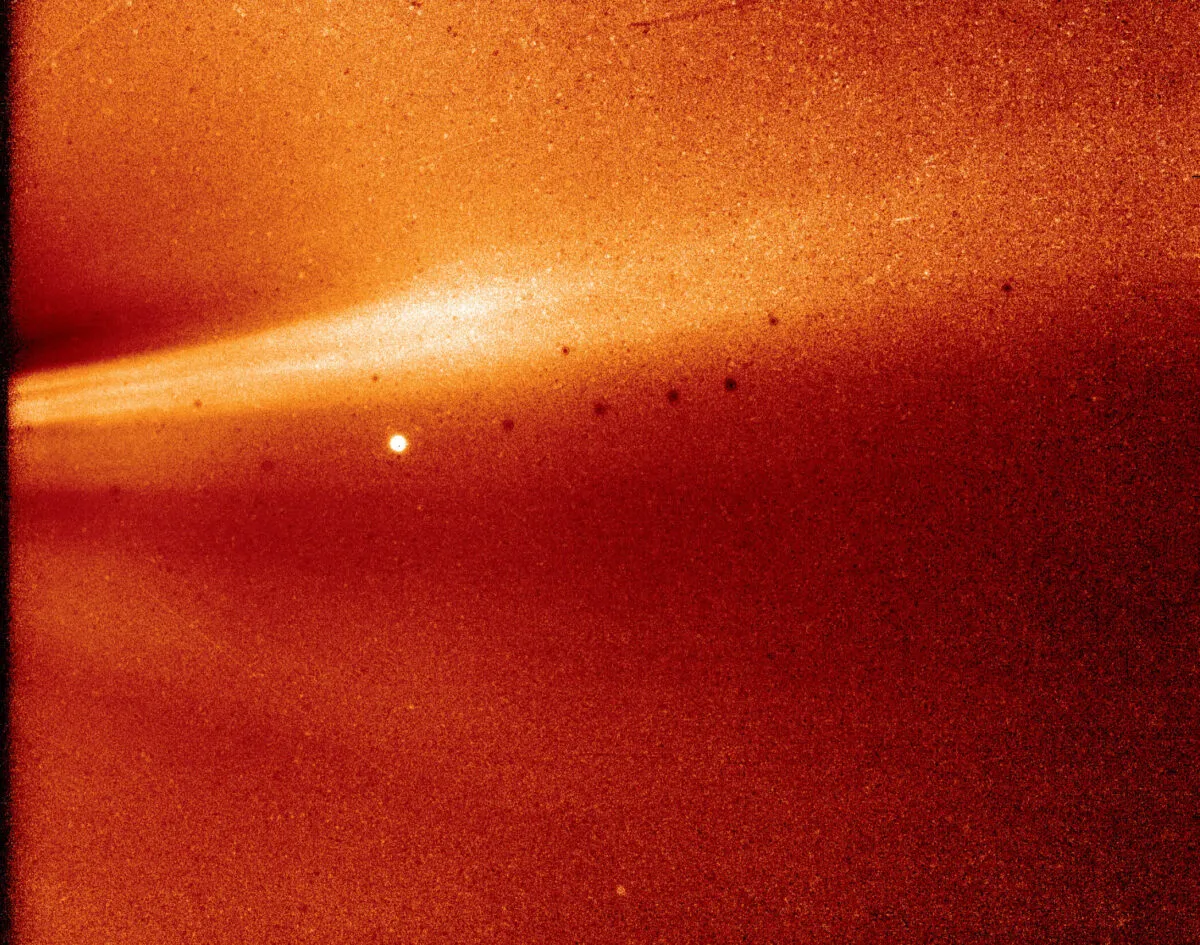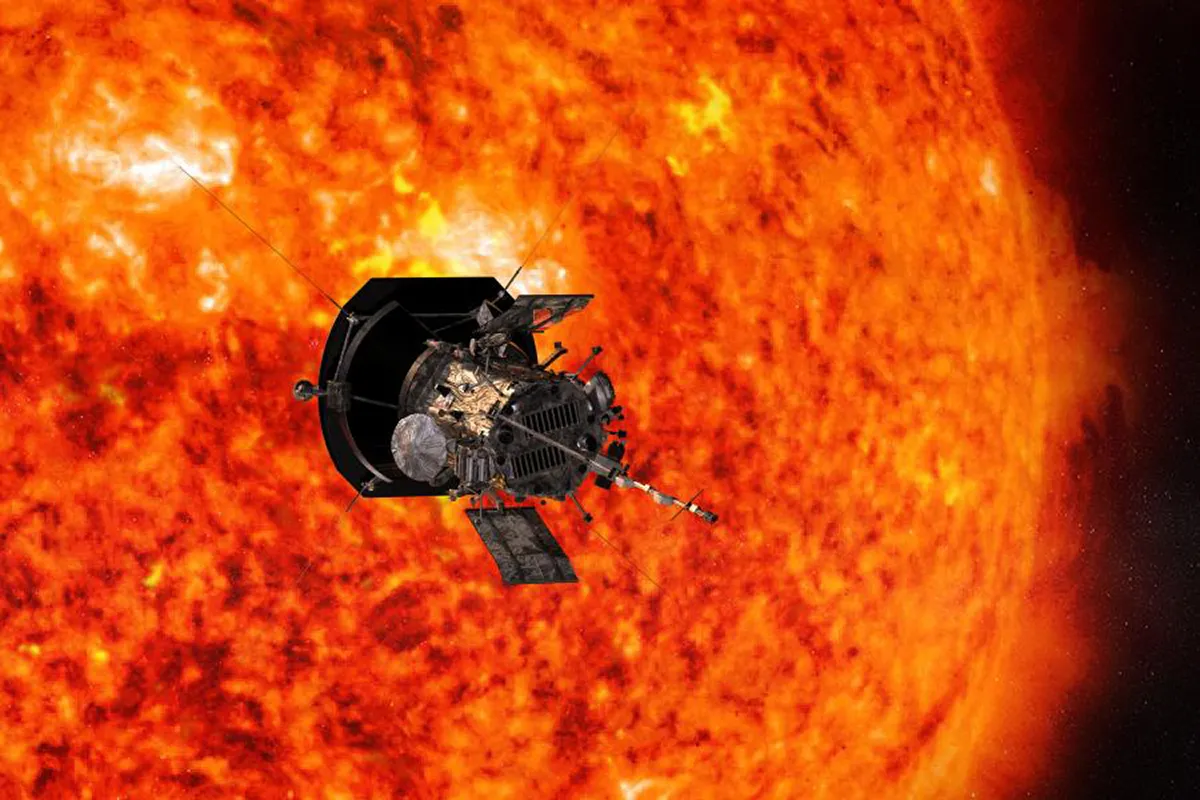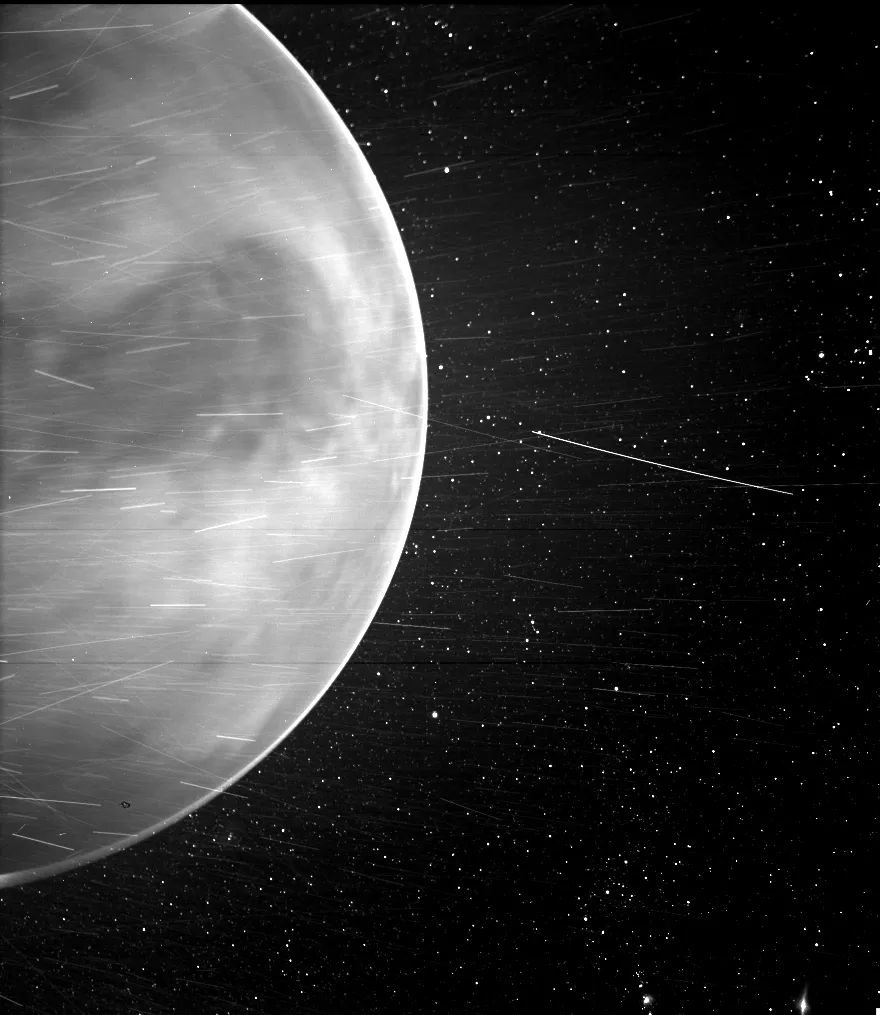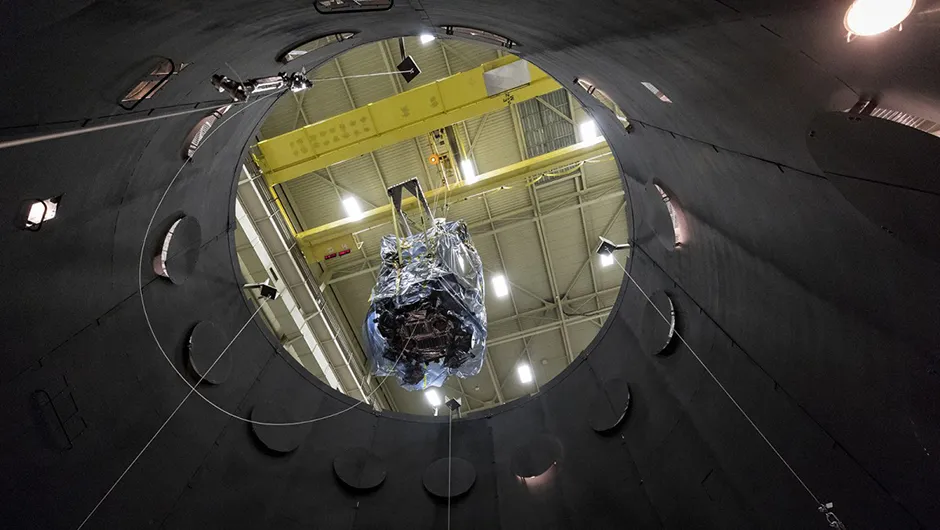An artist’s illustration of the Parker Solar Probe studying the Sun. Image Credit: NASA/Johns Hopkins APL/Steve Gribben
The Sun is the pulsating heart of our Solar System. Its gravity controls the motions of the planets; its heat and light define their climates; and its energy makes all life on Earth possible.
Without the Sun, the Solar System simply would not exist.And yet we know surprisingly little about our own star.

Few of the hundreds of space missions flown in the last 60 years have been sent towards the Sun and the handful that have made the journey inwards have looked on from a distance, far away from the worst of the Sun’s ferocity.
Not so with NASA’s Parker Solar Probe, which launched on 12 August 2018 and is one of many missions dedicated to the study of the Sun.
The mission will make a dive towards the Sun, travelling right through the corona, passing a mere 6.3 million km from our star’s surface (4.5 times the diameter of the Sun), the closest any spacecraft has ever come to the Sun.
“For the first time we are really going to sample the coronal material,” says Nicola Fox, the project scientist for the Parker Solar Probe mission. “It’s a real voyage of discovery.”

With a little help from Venus
Getting there, however, was no easy feat.
Parker hurtled towards the Sun at a speed of 690,000km/h, becoming the fastest human-made object ever built, shattering the previous record of 145,000km/h set by Juno.
But even that wasn't be enough to get the probe into orbit around the Sun, so the mission will have to get a push (or seven) along the way.
“The Parker Solar Probe mission will use Venus to do gravity assists,” explains Fox.
“Each pass will be a bit like a handbrake turn in a car, letting us focus the orbit a little bit closer to the Sun each time.
The first one will be six weeks after the launch, with another six flybys over seven years.”
The initial mission will pass through perihelion, its closest approach to the Sun, 24 times.
During these times, it will have to endure temperatures up to 1,400°C.
In-between, the spacecraft will swing back out to the orbit of Venus where the temperatures will drop to below freezing.
“If you take any material and heat it and cool it 24 times it will become brittle or elastic,” says Fox.
“Coming up with materials that can actually withstand these big temperature swings was a big development.”

The temperature isn’t the only thing that will be extreme about this environment.
The probe could end up in the middle of one of the Sun’s most energetic events: a solar flare or a coronal mass ejection.
But while most space probes have to shy away from these explosions, Parker will be leaning into them.
“People ask if I’m worried we’ll be up close and hit by a solar flare, but I’m actually worried that we’ll get really close and we won’t get hit by one,” says Fox.
“We want to see coronal mass ejections.
We want to see all kinds of solar activity from the quieter than quiet to the very active.”
Parker’s particle detector experiments – Integrated Science Investigation of the Sun (ISIS) and Solar Wind Electrons Alphas and Protons (SWEAP) – will be able to measure the type, energy, speed and temperature of the particles as they are thrown out by a flare.
Researchers back on Earth will then be able to compare these results to what the instruments saw when there were no flares, giving a unique insight into these solar events.
A NASA video explaining how the probe will make its journey to the Sun. Credit: NASA's Goddard Space Flight Center
Strange cooling is a hot topic
The probe will get its first opportunity to catch a flare in the act of erupting when it makes its first trip through perihelion around three months after launch.
From this close-up viewpoint, Parker will start gathering data that will help answer some of the questions we still have about the Sun.
“One of the big mysteries is that the temperature in the corona is around 300 times hotter than the surface of the Sun. That makes no sense: when you walk away from a campfire you get colder not hotter, so what’s going on?” says Fox.
One of the most popular theories about what’s causing this was put forward in the 1970s by Eugene Parker, the solar scientist after whom the mission is named.
What we know for a fact is that where the temperature is at its height, the particles in the corona are also being energised until they have enough speed to pull away from the Sun’s surface and accelerate into interplanetary space.
As they pull away, a portion of the solar magnetic field itself becomes trapped by the gas and carried away with it.
Parker’s suggestion was that nanoflares – tiny solar flares too small to be seen from Earth – convert the energy in the trapped magnetic field to heat. But this is just one theory.
“No single theory can explain everything that goes on around the Sun,” says Fox.
“There are many competing ideas and Parker’s is the one a lot of people think could be true.
We’re certainly going to see if we can find these nanoflares.”
Solar magnetic field experiment
The Parker Solar Probe will attempt to uncover these nanoflares by listening out for their radio signals using the FIELDS Experiment.
The instrument will also map out one of the largest structures in the Solar System: the solar magnetic field, which extends 14.5 billion km from the Sun, or twice the distance to Pluto.
The field has a profound effect on the planets and their atmospheres, but we still know little about how it is created.
One of the biggest questions that astronomers hope to answer using FIELDS is the reason for the 11-year solar cycle, which causes the Sun’s magnetic poles to exchange places.
When the Sun is mid-flip, the number of sunspots, flares and coronal mass ejections dramatically increases.
And when these reach Earth, they interact with our own magnetic field to create what can be quite extreme outbursts of space weather.
“That interaction produces the aurora, but it can also cripple satellites, affect power grids and interfere with GPS systems.
Parker will dramatically improve our knowledge of the physics needed to predict when these events will occur,” says Fox.
The path to creating the Parker Solar Probe has been a long one, but the mission is now finally ready to begin its journey and reveal the mysteries that lie at the centre of our Solar System.

Surviving the inferno
Parker will pass closer to the Sun than any human-made object before it, but how will it stay safe?
To survive temperatures up to 1,400ºC at close quarters to the Sun, Parker is equipped with the Thermal Protection System (TPS): a sun shield 12cm thick and over 2m in diameter.
“The TPS is made of super-thin sheets of a carbon material a bit like what’s used in graphite golf clubs and tennis rackets,” says Fox.
“Then there’s foam in-between. This is covered in a white alumina, like a ceramic.
That reflects a lot of the Sun’s light and the rest is absorbed and used to keep the rest of the spacecraft warm.
It sounds ironic, but we’re almost more concerned about things getting cold rather than getting hot.”
Behind the shield Parker needs to be heated because the instruments operate best at room temperature.
Though it might be scorching in the sunshine, it’s cool in the shade and without an atmosphere to move the heat around, temperatures drop dramatically.
Maintaining this delicate balance requires Parker to stay precisely aligned so that its instruments are always in shadow.
With an eight-minute delay between Earth and the Sun there’s no way that Parker could be controlled from the ground.
“She has to look after herself,” says Fox.
“If a sensor’s in the sunlight when it shouldn’t be, Parker has to figure out what thruster it needs to fire to turn.
"The sheer amount of technology that had to be developed is why Parker has taken 60 years in development. It’s not a forgiving environment we’re going to.”

